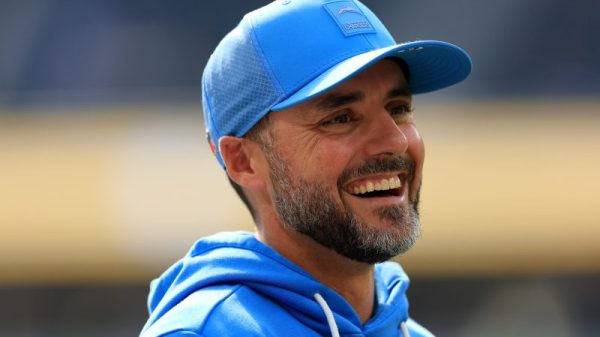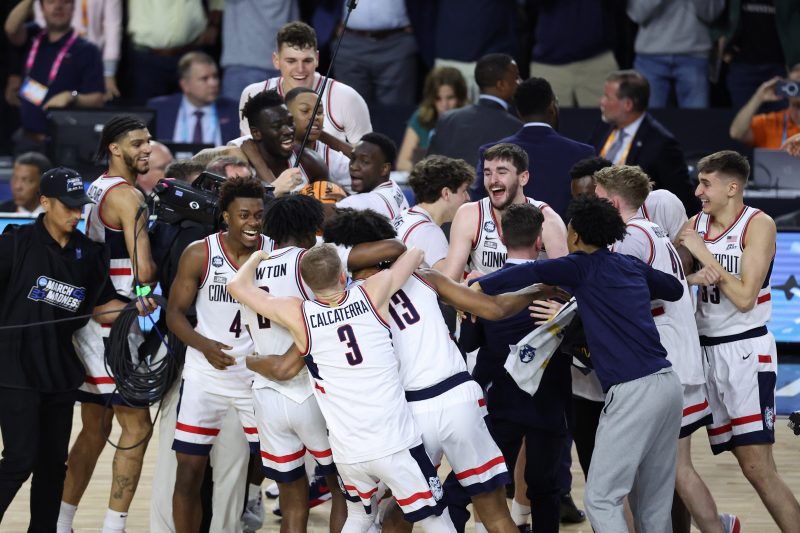The beginning of college basketball season never arrives with much fanfare. If you’re like most American sports fans, you haven’t even thought much about it since Connecticut cut down the nets seven months ago and probably won’t think about it much more until it’s time to fill out the office pool four months from now.
But Monday, you are going to turn on your television and see quite a bit of college basketball even though there’s probably a better way to market the sport than an opening night that consists of No. 1 Kansas taking on North Carolina Central or Duke go through a glorified scrimmage against Dartmouth.
The meekness with which college basketball presents itself in November amidst football season and the start of the NBA and NHL is one of the sport’s old battles. But this year, there’s real angst about a new and even more important one: How much longer is the NCAA tournament going to be the NCAA tournament as we know it?
Or, put another way, how much longer can one of the most popular events in American sports remain unblemished by the legal and financial cross-currents that are roiling all of college sports?
Even as a billion-dollar annual enterprise and a national institution, the NCAA tournament is going to end up as collateral damage for the huge fights going on over name, image and likeness, potential revenue sharing with athletes, possible Congressional intervention and a ruthless cash grab that is concentrating most of the power in the hands of a few conferences.
If you’ve been paying close attention, the signs of trouble are everywhere.
Gonzaga, the most important and successful mid-major brand of the last 20 years, is desperate to get into the Big 12 because it is afraid of being on the wrong side of the divide if the power conferences eventually split off from the NCAA.
Greg Sankey, the SEC commissioner and arguably most powerful person in college sports, is increasingly shooting verbal arrows at NCAA governance and committees that he believes are overweight with small school influence, constricting his league’s ability to evolve. This, too, seems like a pretext for the SEC to either run roughshod over the rest of Division I or break away.
And if you dig even deeper, the NCAA’s recent decision to make a big change to the NIT, which it owns and operates, is telling about the mindset these days in Indianapolis. They’re scared, and they probably should be.
The NIT itself isn’t the real issue. It’s an expendable event with a relatively small audience, and most casual fans wouldn’t notice if it went away tomorrow. But something happened a couple months ago that clearly has the NCAA on alert.
In September, a report surfaced from The Athletic about Fox possibly partnering with the Big East, Big Ten and Big 12 on a 16-team postseason tournament in Las Vegas for schools that don’t make the NCAA field. If it comes to fruition, it would presumably siphon off some of the more prominent teams in the NIT.
In response, the NCAA announced on Oct. 27 that the NIT would no longer hand out automatic bids to regular season champions of any league that don’t win their conference tournaments. Instead, the group running the NIT changed the criteria and will guarantee two bids from the top six conferences (ACC, Big East, Big Ten, Big 12, Pac-12 and SEC) plus the two top teams in the NET rankings that don’t get selected for the NCAA tournament field. The rest of the 20 bids will be at-larges selected by a committee.
Coaches and administrators at mid- and low-major schools erupted with anger. The old format had been a postseason safety net for a lot of mid-major and low-major teams that don’t get into March Madness, and now the NIT will be just one more instrument kowtowing to the power conferences.
In a briefing with several media outlets (USA TODAY Sports was not among them), NCAA vice president of basketball Dan Gavitt basically admitted that the change was made because the new Fox tournament poses a threat.
‘The very viability of (the NIT) could be in jeopardy,’ Gavitt said, according to ESPN.
You might think, ‘Who cares?’ The NIT hasn’t been relevant in ages, and the audience for a new tournament of also-rans is probably small. But there’s a larger chess game going on here. If this Vegas event happens, it will provide the kind of competition that rarely works in the NCAA’s favor: A tournament run by three conferences in cooperation with their media partner while cutting the middle man − in this case, the NCAA − right out of the loop.
What does that sound like? It’s basically the template for the College Football Playoff, which is managed by the 10 FBS conferences and Notre Dame. The NCAA and thousands of schools who don’t play big-time football all share the wealth of March Madness, but they don’t see a dime from the billions generated by the CFP.
So think about all of this taking place in an environment where the power conference schools are frustrated at the slowness and ineffectiveness of the NCAA to enact major changes because the majority of its governance is in the hands of small-school administrators who want to be part of Division I basketball but whose budgets are often a fraction of those in the SEC and Big Ten.
Think about the power conferences girding themselves for the possibility that they will be forced by the courts to share revenue with athletes and make them employees.
Think about Sankey in particular agitating for expansion of the NCAA tournament over the last couple years and dropping hints that he believes Division I, which will have 362 teams this year, is too big to accommodate everyone’s interests.
And think about how major conferences have completely reshaped themselves so quickly and dramatically in a short period of time, with an 18-team Big Ten that will soon stretch from Piscataway to Seattle and a 16-team Big 12 spanning from Orlando to Salt Lake City.
Nobody knows what’s going to happen in a year, much less over the next five or 10. But there’s a very real possibility that all of these factors are going to pull the current structure of Division I apart in some way.
Though Gavitt shot down the idea that the NIT changes were a precursor to altering the NCAA tournament in some way, it would be foolish to believe that March Madness is immune from getting swept into all these other issues.
And if there is some big split between the haves and have-nots, administrators across the country are wondering where that leaves the NCAA tournament. Everyone recognizes the value of Cinderella and a school like Maryland-Baltimore County (athletic budget of $23.5 million) having access to the same tournament as Virginia (athletic budget $162 million) and becoming the first No. 16 seed to knock off a No. 1.
But if we get to a point where paying players a salary is the new dividing line, does a program like UMBC come along or do they play amongst more like-minded schools with similar resources?
That’s why the Fox postseason tournament is, in some circles, viewed as an existential threat. What you’ll essentially have is a major network and the three conferences under its umbrella building the infrastructure for an event where they choose who gets invited and they choose who gets the money.
If the NCAA goes away or splits up or evolves into something different than what it is now, college basketball’s postseason suddenly becomes the Hunger Games. And the competition between Fox and ESPN and maybe other networks like CBS and Turner to win that battle − likely in accordance with the conferences they partner with − is going to be absolutely fierce. And as usual, the little guys who give the sport so much flavor and character won’t come out as winners.
Maybe none of that ever comes to fruition and the NCAA tournament goes on mostly how it is now until the end of time. But as the 2023-24 college basketball season begins, the future of the sport seems very much up for grabs.



























